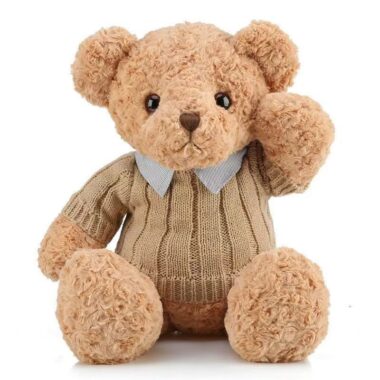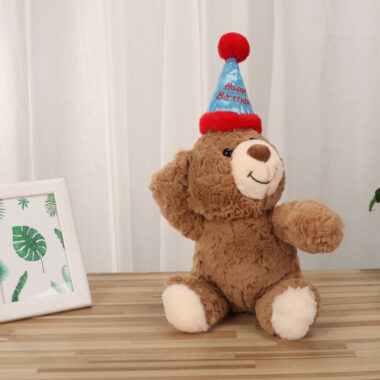When selecting soft toys for infants, safety, comfort, and developmental benefits should be your top priorities. Here’s a guide on what to look for and why it matters:
1. Safety
- Non-toxic materials: Always choose soft toys made from non-toxic, BPA-free, and hypoallergenic materials. Infants tend to put everything in their mouths, so ensuring the toy is free of harmful chemicals is essential.
- No small parts: Avoid toys with small detachable parts that can pose a choking hazard. Opt for toys that are solid, with securely attached features like eyes or buttons.
- Machine washable or easy to clean: Babies are messy, so choose toys that are either machine washable or easy to clean. This ensures hygiene and durability.
- Soft and smooth textures: Soft toys made of plush or cotton fabrics are ideal since they are gentle on a baby’s sensitive skin.
2. Size and Shape
- Appropriate size: The toy should be large enough that the infant can’t easily swallow it. Small, bite-sized toys can be a choking hazard, so it’s better to go with toys that are at least a few inches big.
- Lightweight: A soft toy should be light enough for babies to hold and cuddle, but not too heavy or cumbersome. The lighter, the better, especially as they start learning to grasp and explore.
- Simple design: Babies are drawn to colorful, visually stimulating toys. Look for toys with vibrant colors or contrasting patterns, which can stimulate their developing eyesight.
3. Sensory Stimulation
- Textures and materials: Different textures, such as velvety, bumpy, or smooth fabrics, can encourage tactile exploration. Some toys even include crinkly or squeaky features to make the playtime more engaging.
- Sound: Soft toys with built-in sounds, like gentle rattles, soothing music, or soft squeaks, can provide auditory stimulation. This helps infants learn to focus on different sounds and build their auditory skills.
- Bright colors: Babies can perceive high-contrast colors (like black, white, red, or yellow) from a young age, so toys with these color patterns are good for visual development.
4. Developmental Benefits
- Encouraging motor skills: Soft toys with varying textures, different shapes, and simple interactive features (like buttons or zippers) can help babies develop their fine motor skills. Grabbing, touching, and manipulating these toys are great exercises for hand-eye coordination.
- Promoting emotional comfort: Cuddly toys can help infants feel secure and comforted, especially when they are settling down for a nap or sleep. A familiar, soft toy can be a soothing companion during times of anxiety or change.
- Bonding opportunities: A soft toy can be part of a bonding experience when parents use it to engage with their baby—such as during playtime or bedtime rituals.
5. Age-appropriate Features
- Age recommendations: Always check the toy’s packaging for age recommendations. Soft toys designed for babies should be labeled as appropriate for newborns and up, with safety standards that meet their developmental needs.
- No strings or ribbons: Avoid toys with strings or ribbons that can cause strangulation or be a safety hazard. Always ensure the toy has no loose threads or long parts.
6. Durability
- Well-constructed seams: Ensure that the toy is well-stitched with strong seams to prevent it from falling apart, especially as babies tend to pull, chew, and tug on toys.
- Washability: Soft toys will likely need frequent washing, so it’s essential to select ones that are machine washable or easy to wipe clean. A toy that can hold up after multiple washes is ideal.
Final Thoughts
When choosing soft toys for infants, the goal is to balance safety, comfort, and developmental stimulation. The right toy can become a treasured companion for a baby, supporting their growth and providing comfort as they explore the world around them. Always prioritize safety features first, followed by sensory and developmental benefits, to ensure a happy and healthy experience for your little one!









